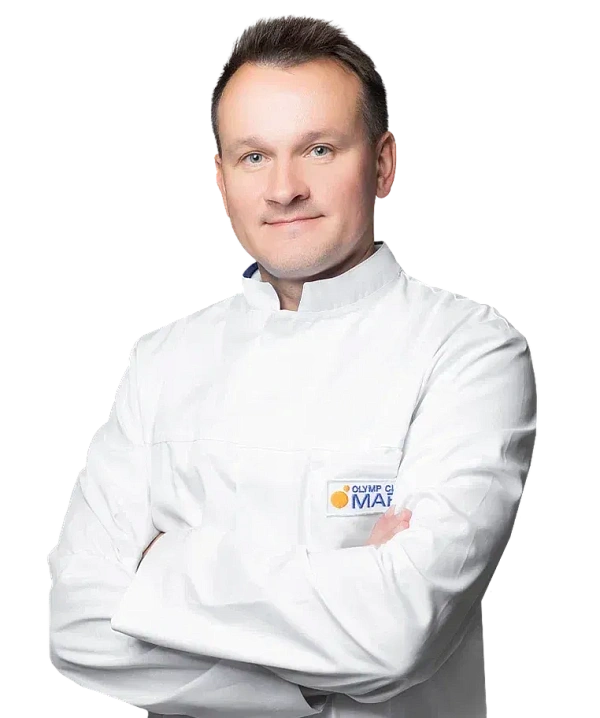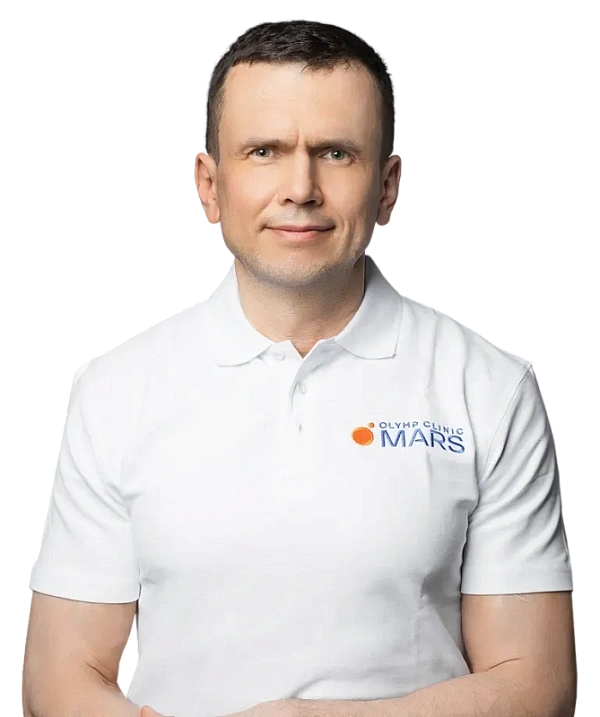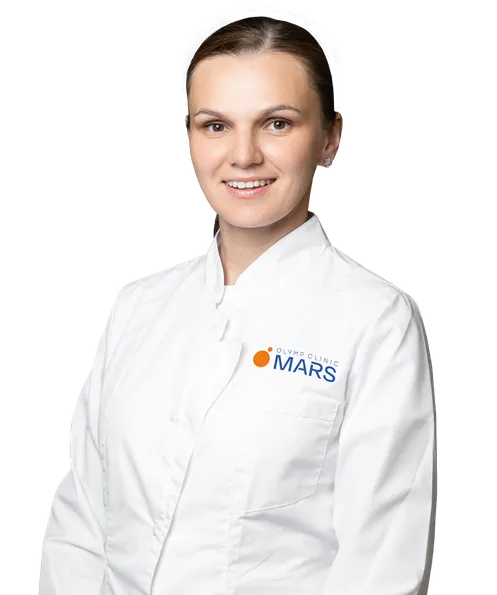Manual therapy
A method of treating diseases of the musculoskeletal system based on manual action on joints, spine, muscles and ligaments.
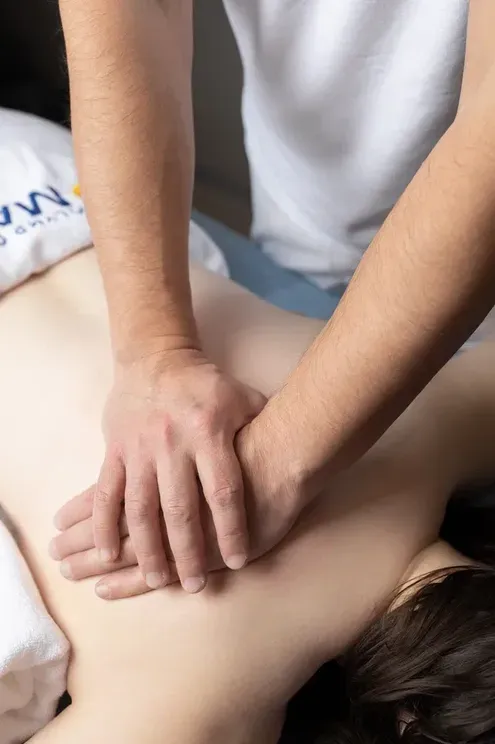
The musculoskeletal system often suffers from stress, sedentary lifestyle or injuries, which leads to limited mobility, pain syndromes and even chronic diseases.
Manual therapy restores the natural mobility of the spine and joints, improves tissue nutrition by increasing blood flow and lymph circulation. The technique is effective in the treatment of back and joint pain (osteochondrosis, arthrosis, arthritis, hernia, protrusion, etc.), as well as neurological complications, including radicular syndromes (radiculopathy, sciatica, sciatica, etc.). The procedure is aimed at eliminating symptoms and restoring the function of the motor segment. Manual therapy differs from massage: it affects not only soft tissues, but also directly on joints and related tendon-ligamentous structures (including intervertebral discs). This makes it an effective treatment method for patients with functional disorders of the musculoskeletal system.
A complete diagnosis is performed before the start of the manual therapy session: Collection of anamnesis and assessment of patient complaints. X-ray, MRI or CT scan. Inspection and functional tests to identify problem areas. The patient is recommended to wear comfortable clothes and avoid heavy physical exertion the day before the session.
The patient is placed on a massage couch in a comfortable position. The specialist manually corrects pathological changes by affecting joints, spine or muscles using special techniques: Manipulations: short jerky movements that restore joint mobility. Mobilizations: gentle stretches, tilts and rotations to eliminate tension and improve blood circulation. Soft techniques: relieving spasms, improving the elasticity of muscles and ligaments, eliminating pain.
Couches with height and tilt adjustment. Orthopedic pillows and cushions. Vibrating massagers or applicators for preparing tissues for exposure.
After manual therapy, the patient is recommended to rest for 15-20 minutes, avoid sudden movements and heavy physical exertion during the day. You should also warm the problem area to enhance the therapeutic effect.
Multifaceted impact— Improves the functioning of joints, muscles and nervous system. Without medicines— It helps to avoid side effects of medications. Personalization— The methodology is selected individually, which ensures high efficiency. Minimum of contraindications— It is suitable for patients of different ages and health conditions.
The effect of manual therapy
Patients notice significant improvement after the first sessions of manual therapy. Tension in the back disappears, joints become more mobile, and painful sensations decrease. In addition, this method not only eliminates the symptoms, but also helps restore the natural functioning of muscles and ligaments, improves blood flow and lymphatic drainage.
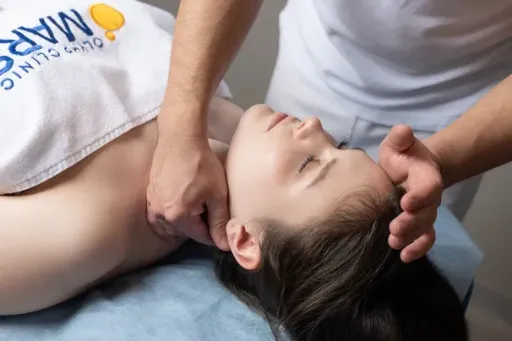
Who performs the procedures?
Manual therapy requires high qualifications, so our clinic employs only certified specialists with medical education. Our doctors use proven and safe techniques, adapting them to the needs of each patient.
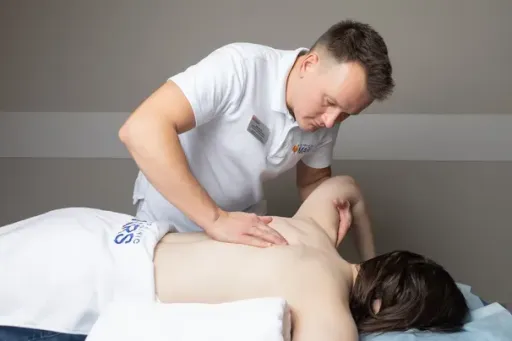
Frequently Asked Questions
How do I understand that I need manual therapy?
How long does the course of treatment last?
Is it possible to combine manual therapy with other methods of treatment?
Is the procedure painful?
Didn't find an answer to your question?
You can describe your problem in detail and ask a question to the doctor. He will answer you and help you find a solution
Врачи
Смотреть всех врачейCandidate of Medical Sciences. Orthopedic Trauma Physician, Chiropractor, Sports Medicine Physician, Physical Therapist. Head of the Rehabilitation and Restorative Medicine Department.
Rehabilitation therapist, Orthopedic trauma physician, Chiropractic therapist, Sports medicine physician, Exercise therapist, Physiotherapist. Candidate of Medical Sciences. Leading specialist of the Department of Rehabilitation and Restorative Medicine.
Similar referral activities
Consultation with a rehabilitologist
The doctor of the department of rehabilitation and restorative treatment is engaged in restoring or compensating for the lost functions of the patient after various injuries, operations and diseases.
High-intensity magnetic therapy (SIS)
The method of physiotherapy, which is based on the effect of a powerful pulsed magnetic field on body tissues, which contributes to pain relief, reduces inflammation and accelerates tissue regeneration.
Techar therapy
A method of physiotherapy based on the use of electromagnetic waves of a certain frequency for a deep impact on the tissues of the body.
Shock Wave therapy (UHT)
A treatment method based on the effect of acoustic shock waves on body tissues.
Low-frequency electrostatic therapy
A method of physiotherapy based on the effect of a low-frequency electrostatic field on body tissues.
Mechanotherapy
A rehabilitation method based on the use of mechanical devices to restore joint mobility and increase muscle strength in patients after injuries and operations on the musculoskeletal system.
